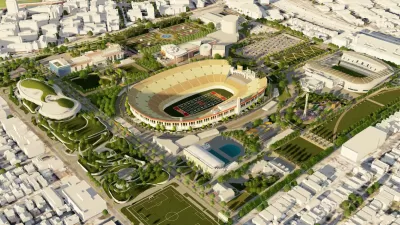Haiti has seen improvements since the 2010 earthquake. However, persistent challenges remain. Dave Hampton, architect and international development consultant for natural and built environment integration, writes about one in particular: ravines.
Compelled to action by the catastrophic earthquake in Haiti in 2010, architect Dave Hampton joined Architecture for Humanity and J/P Haitian Relief Organization. He lived and worked in Haiti from 2010 - 2012 helping to reconstruct the country. He recently returned to Haiti and writes ". . . after having left Haiti to return to the United States, travel a bit in South America, and now back in Haiti, I see some notable changes in Haiti’s capital city: a (more) modern airport arrival experience greets the visitor. More public spaces are either accessible or are being improved. ‘Tent cities’, for better or worse for the residents, have been removed from their former and very prominent locations near the now-demolished Presidential Palace, the formal axes of the Champ de Mars – a vestige of colonial French planning – and other public spaces."
"Ravines, however, despite some cosmetic efforts at community-led cleanups and municipal trash pickups, can still be counted on to belie both specific challenges and the broader challenges still facing Haiti: deep, (infra)structural, inherently tied to environment and ecology, and inextricably linked to the communities around them and the people who live there."
"The ravine is both a set of specific challenges in an urban environment and a perfect analogy for what has occurred and still occurs in this country where people and environment intersect. . . ."
FULL STORY: Haiti Update: Reshaping Ravines

Alabama: Trump Terminates Settlements for Black Communities Harmed By Raw Sewage
Trump deemed the landmark civil rights agreement “illegal DEI and environmental justice policy.”

Study: Maui’s Plan to Convert Vacation Rentals to Long-Term Housing Could Cause Nearly $1 Billion Economic Loss
The plan would reduce visitor accommodation by 25% resulting in 1,900 jobs lost.

Planetizen Federal Action Tracker
A weekly monitor of how Trump’s orders and actions are impacting planners and planning in America.

Federal Homelessness Agency Places Entire Staff on Leave
The U.S. Interagency Council on Homelessness is the only federal agency dedicated to preventing and ending homelessness.

Restoring Northern India’s Himalayan ‘Water Temples’
Thousands of centuries-old buildings protect the region’s natural springs and serve as community wells and gathering places.

Milwaukee to Double Bike Share Stations
Bublr Bikes, one of the nation’s most successful, will add 500 new e-bikes to its system.
Urban Design for Planners 1: Software Tools
This six-course series explores essential urban design concepts using open source software and equips planners with the tools they need to participate fully in the urban design process.
Planning for Universal Design
Learn the tools for implementing Universal Design in planning regulations.
Caltrans
Smith Gee Studio
Institute for Housing and Urban Development Studies (IHS)
City of Grandview
Harvard GSD Executive Education
Toledo-Lucas County Plan Commissions
Salt Lake City
NYU Wagner Graduate School of Public Service





























